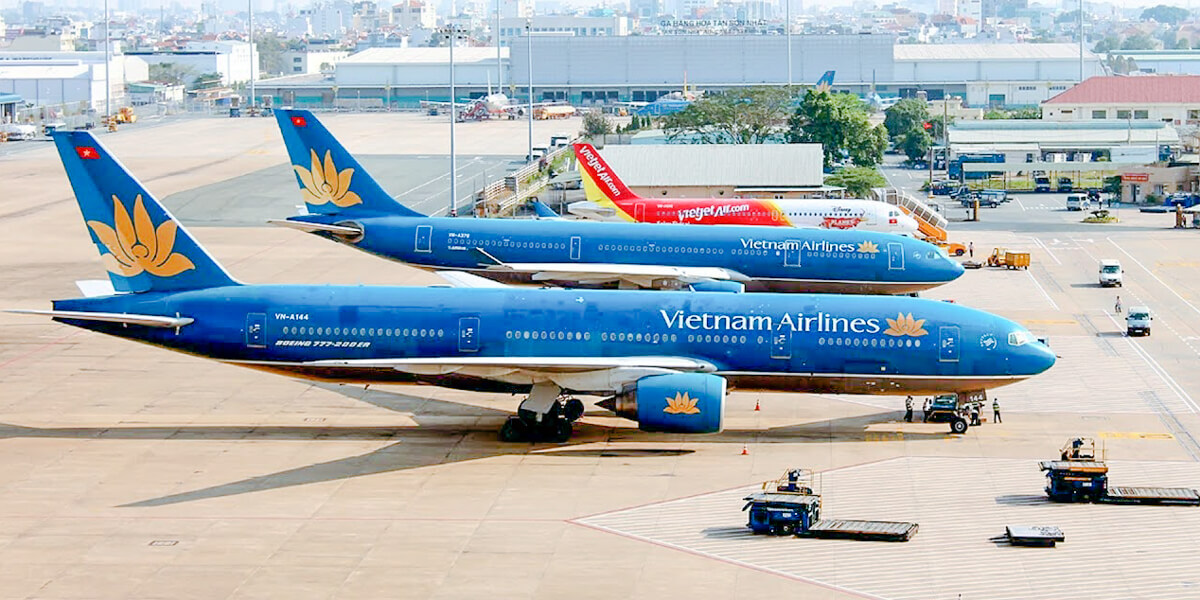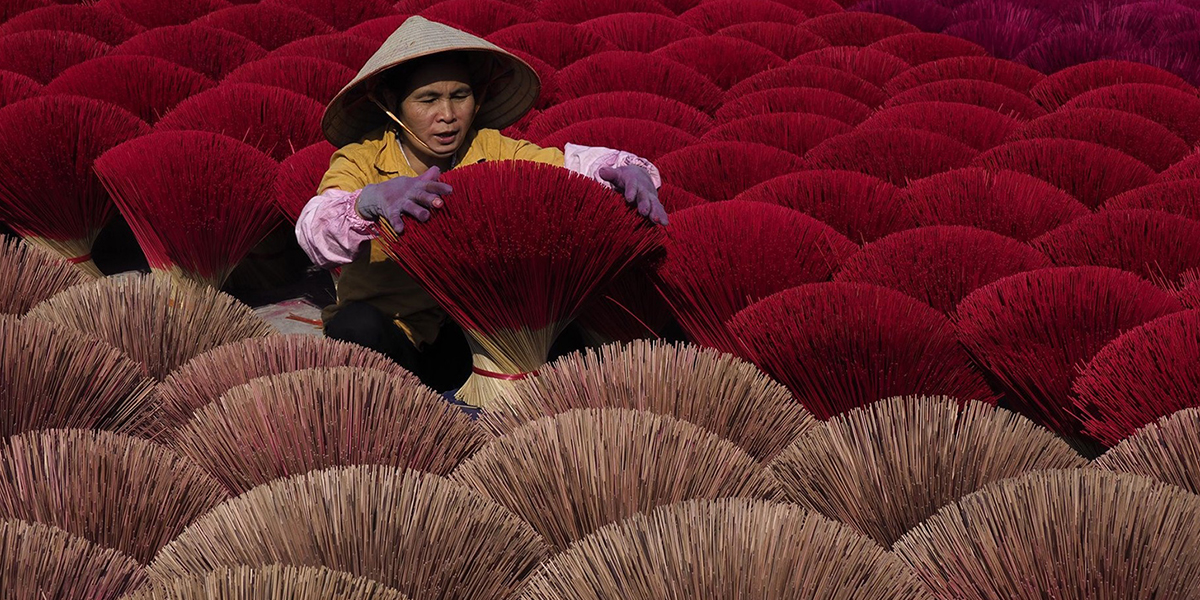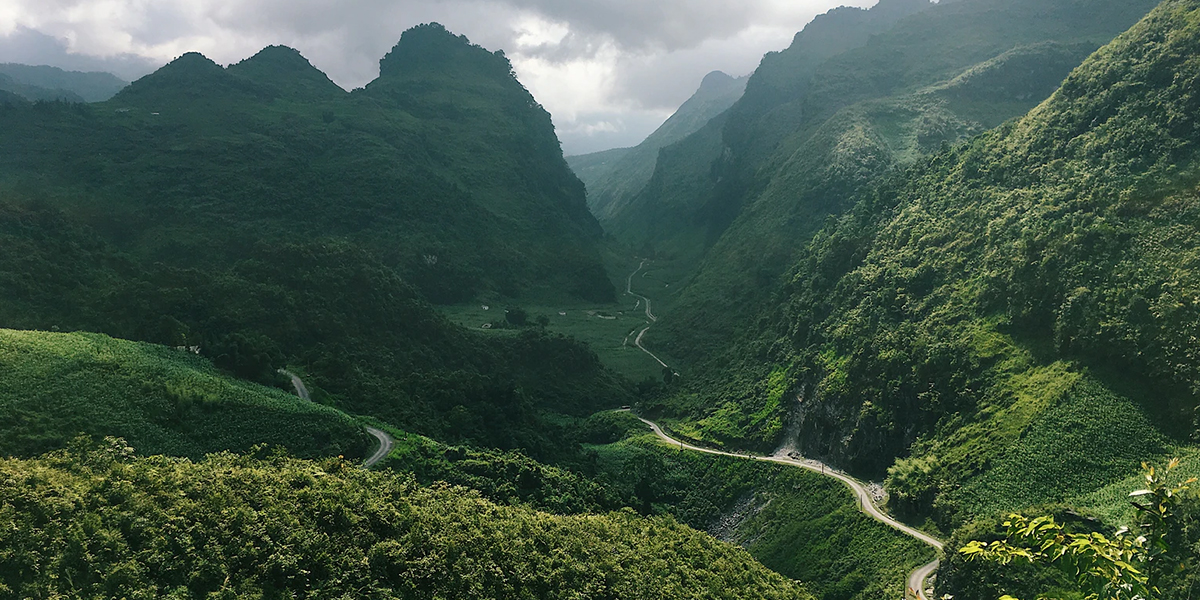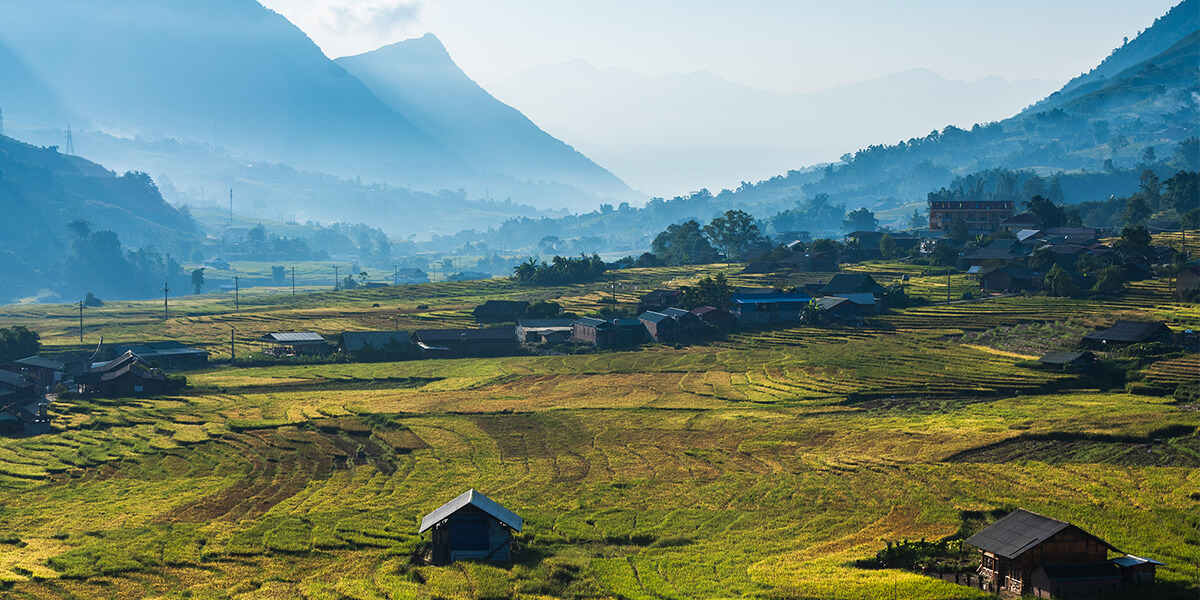Not only is it the largest square in Vietnam, but Ba Dinh Square Hanoi is also a place that has kept the imprint of many important national events. Particularly on September 2, 1945, President Ho Chi Minh read the Declaration of Independence, creating the Democratic Republic of Vietnam. Currently, this is the place where parades take place on major occasions, as well as an attraction for tourists and Hanoians to visit, play and hang out.
I - An overview of Ba Dinh Square history
1 - Ba Dinh Square Hanoi in feudal period

Source: bqllang
This square was originally an area within the ancient Imperial Citadel of Thang Long, which was demolished in 1808 under the reign of Emperor Gia Long. After that, a much smaller new citadel was built, with the western area corresponding to the present-day square of Ba Dinh. In that western area, there was a high mound called Khan Mountain, on which some mandarins spent money to build a tiled house in the mid-19th century, called Khanh Son communal house. This communal house became a meeting place for literati and writers, also where cultural activities of philanthropists often took place.
2 - Ba Dinh Square during the French colonial period
After controlling all of Indochina in 1894, the French army demolished the entire citadel and only kept the North gate. Khan mountain was leveled and a small garden was built in this area, forming a large square named Puginier Flower Garden. A roundabout (Rond-point Puginier) was also built, causing the old Hanoians to call this place the Round Square. Many vital buildings were constructed around it, such as the Governor General’s Palace (1902) which was later the Presidential Palace, or the Albert Sarraut School (1919), which is now the Ministry of Foreign Affairs.
3 - Hanoi Ba Dinh Square in the year 1945
After being appointed as the Mayor of Hanoi on 20th July 1945, Doctor Tran Van Lai decided to rename a series of streets in Hanoi from French words to Vietnamese words, including the Pugininer Flower Garden. It was changed to “Ba Dinh” in order to commemorate the uprising against the French that took place in the Ba Dinh area, Nga Son District, Thanh Hoa Province, lasting from September 1886 to January 1887.

President Ho Chi Minh read the Declaration of Independence in Ba Dinh Square Hanoi in 1945 - Source: tuoitrephuyen
In August 1945, the August Revolution was successful. The Organizing Committee for Independence Day decided to set up a platform in the middle of the square of Ba Dinh for the provisional Government to introduce to the whole nation. At 2pm on September 2, 1945, President Ho Chi Minh stepped onto this stage as President of the Provisional Government, solemnly reading the Declaration of Independence that created the Democratic Republic of Vietnam.
4 - Ba Dinh Square Vietnam in the funeral of President Ho Chi Minh
After a period of serious illness and despite being cared for by all, President Ho Chi Minh passed away at the age of 79 on September 2, 1969. Three days later, a convoy carried his body to the square of Ba Dinh, where it was placed in a transparent glass coffin in the middle of the podium. Leaders of the Party and State took turns standing by his coffin, and the official visitation ceremony began at exactly 6am on September 6, lasting until the end of September 8. At 7:30am on the morning of September 9, 1969, the funeral for President Ho Chi Minh was solemnly held at Ba Dinh Square in Hanoi.
More than 20,000 people in the capital and localities throughout the country, as well as more than 40 international delegations, came here to attend and pay their respect. The ceremony ended with 21 rounds of cannons, and a convoy of aircraft belonging to the People’s Air Force flying over the square of Ba Dinh to bid Ho Chi Minh farewell.
5 - Ba Dinh Square today

Flag lowering ceremony - Source: youtube
With a capacity of about 200,000 people, this square is currently located on Hung Vuong Street, Dien Ban Ward, Ba Dinh District, Hanoi City. The campus is 320m long and 100m wide, including 210 large lawns to increase green space and cool the concrete courtyard, interspersed with 1.4m wide walkways. In the middle of the square is the Vietnamese flagpole with a height of 25m, behind which is the Ho Chi Minh Mausoleum. You can visit the square for free from 5am - 10pm.
Ba Dinh Square Hanoi is the place for not only military parades on major national holidays, but also daily flag raising and lowering ceremonies. The idea of this national ceremony was approved by the Government of Vietnam in 2001, on the occasion of the 111th birthday of Uncle Ho. At exactly 6am in the summer and 6:30am in the winter, the honor guard team performs the flag-raising ceremony, while the flag-lowering ceremony takes place at 9pm. Most Hanoians who pass through the square at these times would stand solemnly, sometimes singing the National Anthem.
II - Where to visit near Ba Dinh Square?
Not only a historical place, but the square of Ba Dinh is also close to many famous attractions that you should not miss when traveling to Hanoi such as:
1 - One Pillar Pagoda

One pillar pagoda - Source: motogo
One Pillar Pagoda is a spiritual destination and a thousand-year cultural symbol of Hanoi. This work was built in 1049 under the reign of King Ly Thai Tong, destroyed by the French during the war, and restored in 1955. Looking like a lotus rising out of the water of Linh Chieu Lake, the temple is considered as having one of the most unique artistic architectures in Asia in 2012.
- Ticket price: 25,000 VND / person ($1.1)
- Opening hours: 7am - 6pm
2 - Ho Chi Minh Mausoleum
Located right behind Ba Dinh Square Hanoi, Ho Chi Minh Mausoleum is the place to keep the body of this great leader of the Vietnamese nation. Started building on September 2, 1973, on the foundation of the old platform where Uncle Ho read the Declaration of Independence, this work is not luxurious but idyllic and sacred. With a height of 21.6m, the mausoleum consists of 3 layers in which the middle part is the room to preserve the body of the president, while the roof is stylized in the shape of a blooming lotus.
- Ticket price: 25,000 VND / person ($1.1)
- Opening hours:
+ April - October: 7:30am - 10:30am (to 11am on weekend & holidays)
+ November - March: 8am - 11am (to 11:30am on weekend & holidays)
3 - Presidential Palace - a part of the complex of Ba Dinh Square
This is the place where Ho Chi Minh used to work as the President of Vietnam from December 19, 1954, to September 2, 1969. Designed by German architect Auguste Henri Vildieu, the Presidential Palace was completed in 1906, but Mr. Ho did not like to live in luxury so he resided in the nearby stilt house. This work is still the working place of the current President and Vice President, so you will not be able to go inside, but it is still possible to take check-in pictures outside of this typical European architecture.
4 - Uncle Ho's stilt house

Uncle Ho's stilt house in the complex of Ba Dinh Square Hanoi - Source: firstvietnam
As mentioned, the Stilt House area is the place where Uncle Ho used to live and work as President, currently storing relics including his used furniture and documents. In front of the idyllic stilt house is a large fish pond, where Ho Chi Minh walks around and feeds fish to relax after hours of stressful work. This area clearly reflects the personality and lifestyle of the historical President of Vietnam: simple, close to nature and imbued with national identity.
- Ticket price: 25,000 VND / person ($1.1)
- Opening hours:
+ Monday and Friday: 7:30am - 11am
+ Remaining days: 7:30am - 11am & 1:30pm - 4pm
5 - Ho Chi Minh Museum
Located in the south of Ba Dinh Square Vietnam, Ho Chi Minh Museum is a place to display artifacts, documents and images about the life and career of this beloved leader. At the same time, you can also find a rich source of relics about the battles, as well as cultural history of the country and people of Vietnam. With an attractive layout, the Ho Chi Minh museum vividly recreates the qualities and history of Uncle Ho, who is loved by the people of the country.
- Ticket price: 40,000 VND / person ($1.75)
- Opening hours: 8am - 11:30am, closed on Monday & Friday
Ba Dinh Square in Hanoi has now become a proud symbol of Vietnam, bearing the precious historical and spiritual values of the entire nation. Let’s take a day to explore this historic square area, you will not regret it.
#ba_dinh_square
#localtravelidea







.jpg) — Ha Bich
— Ha Bich





































